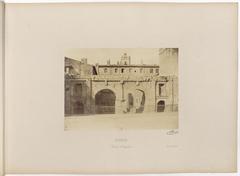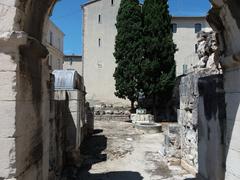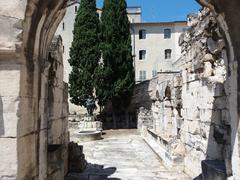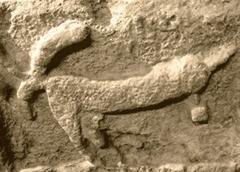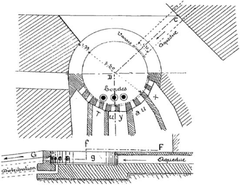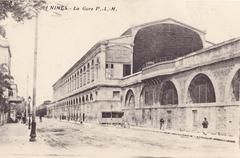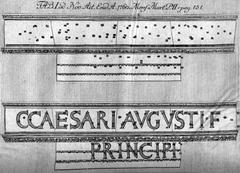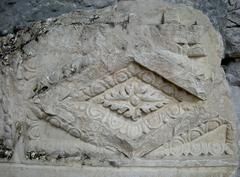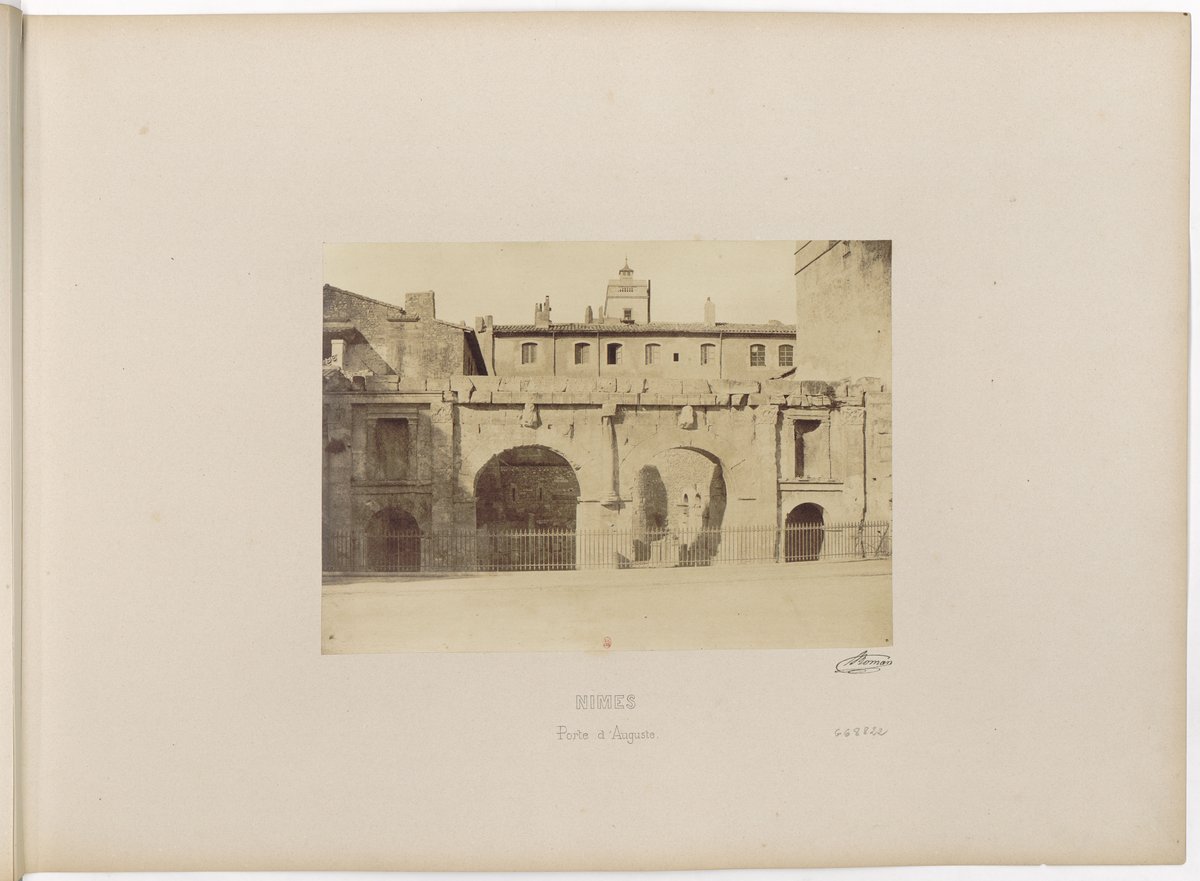
Comprehensive Guide to Visiting Porte d’Auguste, Nîmes, France
Publication Date: 19/07/2024
Introduction
The Porte d’Auguste, or Augustan Gate, is an iconic Roman monument situated in the heart of Nîmes, France. Dating back to the 1st century BCE, this ancient gate stands as a testament to the city’s rich Roman heritage and architectural prowess. Named after Emperor Augustus, the gate originally served as a primary entrance to the Roman colony of Nemausus, the ancient name for Nîmes. Over the centuries, the Porte d’Auguste has witnessed various transformations and restoration efforts, preserving its historical essence and making it a prominent landmark in the city (Nîmes Tourism) (Roman Architecture). Visitors today can explore this remarkable structure free of charge and immerse themselves in the fascinating history and cultural significance of Nîmes. This comprehensive guide provides all the necessary information for a memorable visit, covering the historical background, architectural features, visitor tips, and nearby attractions, ensuring an enriching experience for history enthusiasts and casual tourists alike.
Table of Contents
- Introduction
- History of Porte d’Auguste
- Evolution Through the Ages
- Archaeological Discoveries
- Preservation and Restoration
- Visitor Information
- Nearby Attractions
- Cultural Impact
- FAQ
- Conclusion
History of Porte d’Auguste
Origins and Construction
The Porte d’Auguste dates back to the 1st century BCE, during the reign of Emperor Augustus, after whom it is named. The gate was part of the city’s fortifications and served as a primary entrance to the Roman colony of Nemausus, the ancient name for Nîmes. The construction of the gate is attributed to the period when Augustus initiated extensive urban development projects across the Roman Empire, aiming to enhance the infrastructure and grandeur of Roman cities (Nîmes Tourism).
Architectural Features
The Porte d’Auguste is a remarkable example of Roman engineering and architecture. The gate originally featured four arches: two central arches for vehicular traffic and two smaller side arches for pedestrians. The structure was built using large limestone blocks, a common material in Roman construction. The central arches were approximately 7 meters high and 4 meters wide, allowing for the passage of chariots and other vehicles (Roman Architecture).
Historical Significance
The Porte d’Auguste holds significant historical importance as it symbolizes the Romanization of Nîmes. The gate was not only a defensive structure but also a statement of Roman power and architectural prowess. It marked the beginning of the Via Domitia, a major Roman road that connected Italy to Spain, facilitating trade and military movements across the Roman Empire (Via Domitia).
Evolution Through the Ages
Over the centuries, the Porte d’Auguste has undergone various transformations. During the medieval period, the gate was integrated into the city’s fortifications and was partially modified to suit the defensive needs of the time. The upper parts of the gate were altered, and additional structures were built around it. In the 19th century, restoration efforts were undertaken to preserve and highlight the gate’s Roman origins, reflecting the growing interest in archaeological heritage during that period (Nîmes Heritage).
Archaeological Discoveries
Archaeological excavations around the Porte d’Auguste have provided valuable insights into the Roman period of Nîmes. These excavations have uncovered remnants of the original Roman road, as well as various artifacts that shed light on the daily life and activities in ancient Nemausus. The discoveries include pottery, coins, and inscriptions that offer a glimpse into the economic and social aspects of the Roman colony (Archaeological Institute of America).
Preservation and Restoration
The preservation of the Porte d’Auguste has been a priority for local authorities and heritage organizations. Restoration efforts have focused on stabilizing the structure, preventing further deterioration, and enhancing its visibility for educational and tourism purposes. Modern techniques and materials have been employed to ensure that the restoration work is both effective and respectful of the gate’s historical integrity (Heritage Conservation).
Visitor Information
Visiting Hours and Tickets
The Porte d’Auguste is open to visitors year-round, with extended hours during the summer tourist season. Admission to the gate is free, allowing visitors to explore this historical landmark at their leisure. For those interested in guided tours, tickets can be purchased at the nearby tourist office or online through the official Nîmes Tourism website (Nîmes Tourism).
Travel Tips
- Best Time to Visit: The best time to visit the Porte d’Auguste is during the spring and autumn months when the weather is pleasant, and the tourist crowds are thinner.
- Accessibility: The site is accessible to visitors with mobility issues, but some uneven terrain may require caution.
- Photography: The gate is a popular spot for photography, particularly in the early morning or late afternoon when the light is ideal.
Nearby Attractions
Nîmes Arena
The Nîmes Arena is one of the best-preserved Roman amphitheaters in the world. Built around the same time as the gate, the arena could hold up to 24,000 spectators and was used for gladiatorial games and other public spectacles. Today, it hosts concerts and events, allowing visitors to experience its historical grandeur (Nîmes Arena).
Maison Carrée
Another nearby attraction is the Maison Carrée, a Roman temple that dates back to the 1st century BCE. It is one of the best-preserved Roman temples in the world and provides insight into the religious practices of ancient Nîmes (Maison Carrée).
Jardins de la Fontaine
The Jardins de la Fontaine is a beautiful public garden featuring Roman ruins and sculptures. These gardens were created in the 18th century around the ruins of ancient Roman baths and the Temple of Diana. They offer a serene environment for a leisurely stroll and provide stunning views of the Tour Magne, a Roman tower that once formed part of the city’s fortifications (Jardins de la Fontaine).
Cultural Impact
The Porte d’Auguste is more than just an architectural relic; it is a cultural symbol of Nîmes’ rich Roman heritage. The gate is featured in various cultural events, educational programs, and tourism initiatives that aim to promote the historical significance of Nîmes. It serves as a tangible link to the city’s ancient past, fostering a sense of pride and identity among the local population (Cultural Heritage).
FAQ
- Is the Porte d’Auguste illuminated at night? Yes, the gate is beautifully illuminated in the evening, making it a stunning sight after dark.
- Are there guided tours available? Yes, guided tours are available and can be booked through the Nîmes Tourism website or at the tourist office.
- How long does a visit typically take? A visit to the Porte d’Auguste typically takes about 30 minutes to an hour, depending on your interest in the historical context.
- Can I bring my pet? Pets are allowed in the vicinity, but they must be kept on a leash.
Conclusion
The Porte d’Auguste stands as a testament to the architectural ingenuity and historical significance of the Roman Empire. Its preservation and continued relevance in modern times underscore the enduring legacy of Roman civilization in Nîmes. As a key historical landmark, the gate offers invaluable insights into the past and continues to captivate the imagination of visitors from around the world. Plan your visit today and immerse yourself in the rich history and culture of Nîmes (Visit Nîmes).
